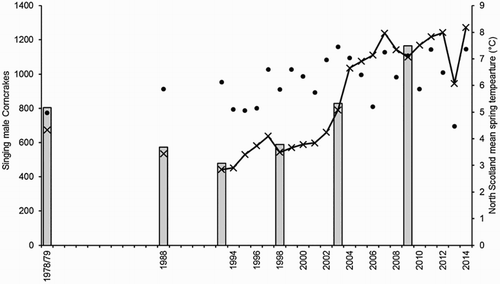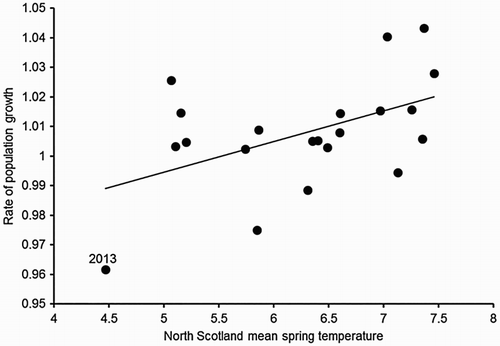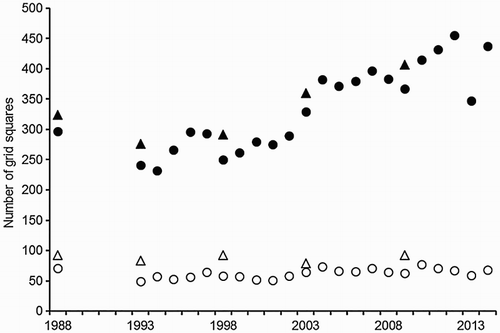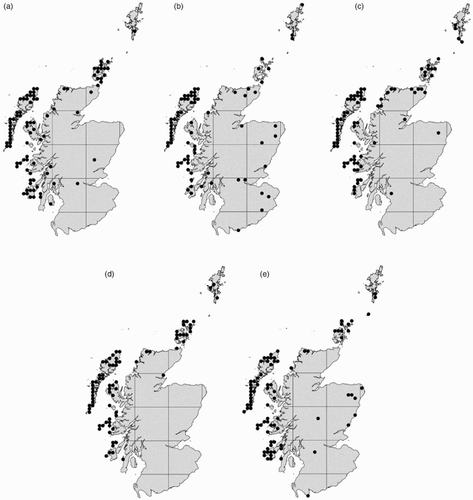Figures & data
Table 1. Numbers of singing Corncrakes recorded in surveys conducted in the UK and the Isle of Man between 1978/79 and 2014. Years with full survey coverage of Great Britain, the Isle of Man or Northern Ireland are shaded grey. Scottish islands included in the core areas counted in every year since 1993 are marked with asterisks.
Table 2. Numbers of male Corncrakes captured and located in intensive searches in May in the Arileod – Totronald area of the Isle of Coll, compared with numbers of singing birds in a later standard census of the same area.
Figure 1. The number of singing male Corncrakes in Great Britain between 1978/79 and 2014. The bars show the number of Corncrakes recorded in the full survey years, while the crosses show the numbers recorded in the core range. Filled circles show the annual spring mean temperature (March–May) in North Scotland (Meteorological Office 2015). Counts in 1978/79 on Barra and Lewis were incomplete, so estimates for those islands were imputed by multiplying the count in 1988 by the ratio of the 1978/79 to the 1988 counts for the other islands of the Outer Hebrides, excluding Barra and Lewis (O'Brien et al. Citation2006). Where upper and lower limits were given for a count (see ), their average was used.

Figure 2. Annual estimates of the rate of growth of the Corncrake population of the Scottish core areas between pairs of successive years in the period 1993 and 2014 in relation to the mean spring temperature (March–May) in North Scotland in the second year of each pair.

Figure 3. Numbers of 1-km (filled symbols) and 10-km (open symbols) Ordnance Survey grid squares with singing Corncrakes in national surveys of Great Britain and the Isle of Man (triangles) and annual surveys of core areas of Scotland (circles), from 1988 to 2014.

Figure 4. Corncrake distribution by 10-km square in Scotland during the full survey years of (a) 1988 (88 10-km squares), (b) 1993 (74 10-km squares), (c) 1998 (79 10-km squares), (d) 2003 (76 10-km squares) and (e) 2009 (84 10-km squares).

